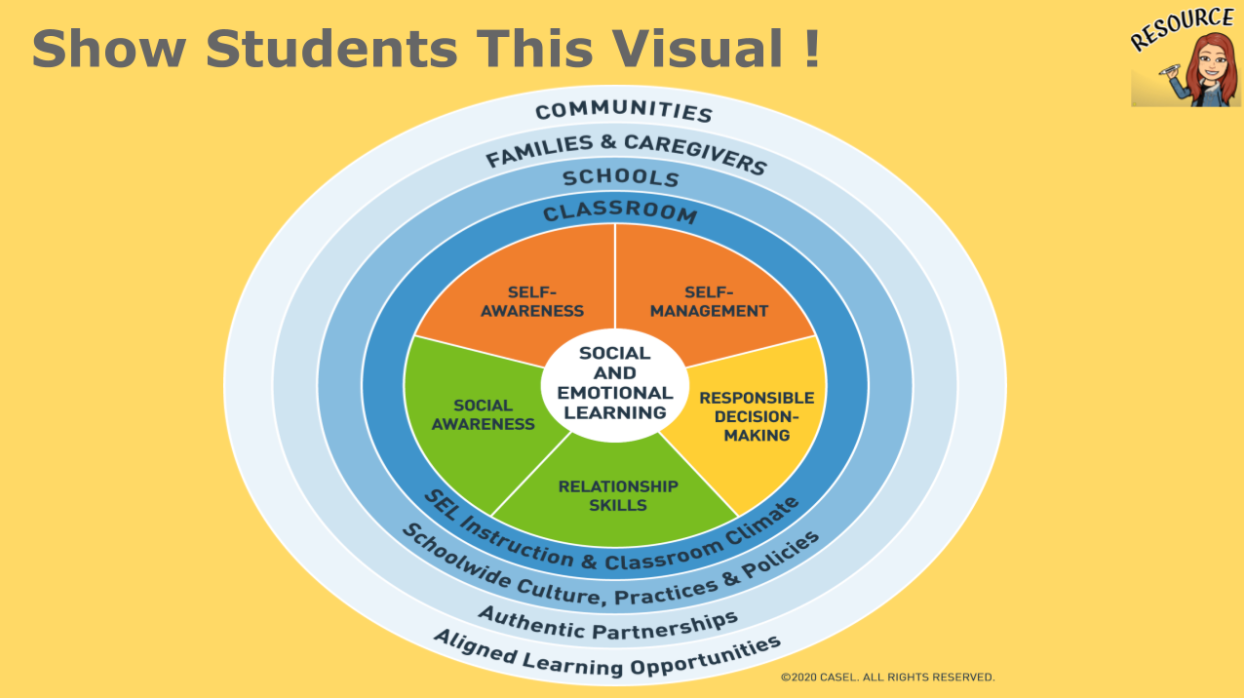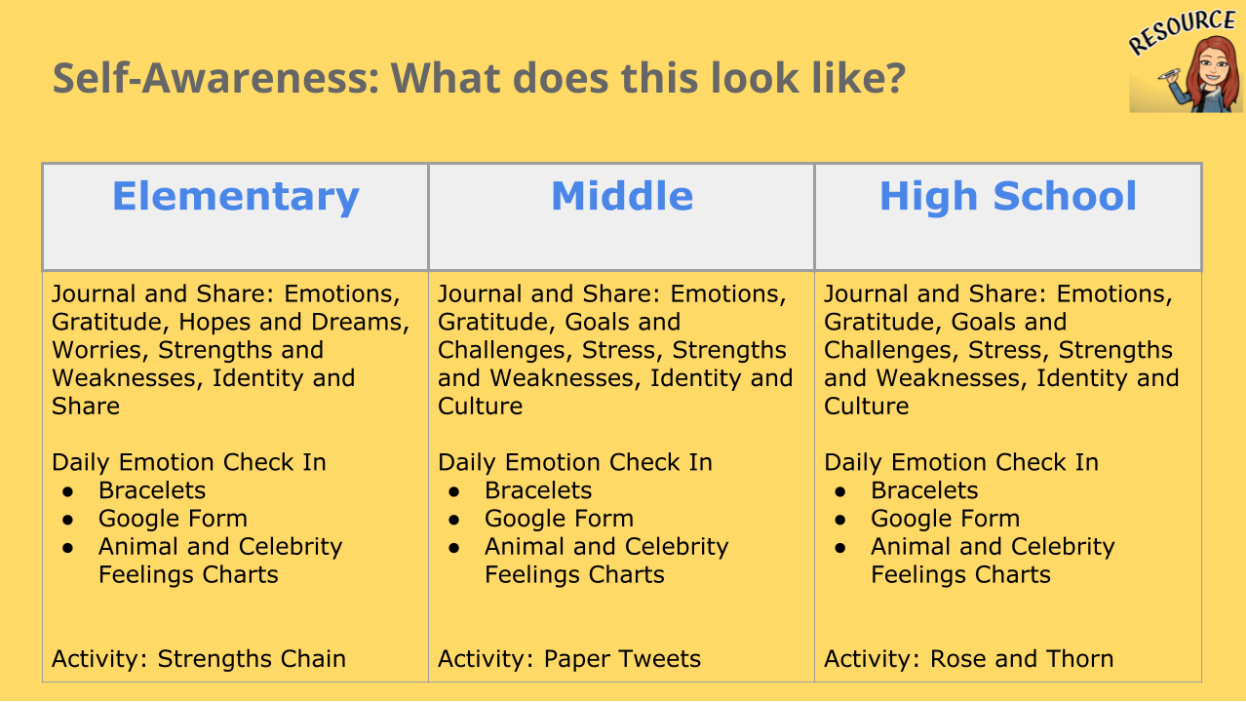Teaching SEL during Covid: Lessons learned and three tips for educators moving forward
By Wendy Turner, M. Ed and 2017 Delaware Teacher of the Year

It has been over a year since Covid wrapped its long, bony fingers around our lives. Covid’s grip affected everything; the way we socialize, move around our communities, work, and learn.
It’s impossible to overstate Covid’s impact on educators and students. Remote learning was born for many in March 2020 without warning, preparation, or understanding of how it would work. We adapted and persevered, and a year later, we are better at it than when we began.
As a classroom teacher, I have worked my way through a myriad of emotions, ups and downs, and challenges of all kinds. Each time I encounter a difficult situation, I remember my students and their families are doing the same, and my focus shifts back to supporting them. I also closely watch my teenage children, acutely feeling their roller coasters of emotions in my heart and soul as they work to make sense of their adolescent years, socialize as best they can and attempt to become more independent, all while spending entirely too much time at home. I feel like a researcher, constantly gathering and sifting through mountains of data in a changing experiment with an evolving thesis statement that doesn’t rest or stay still.
I settle here, trying to answer one question: “How has Covid altered my approach in teaching SEL, and what does this mean moving forward?”
The heartbeat of the classroom
For me, social-emotional learning is the heartbeat of the classroom and the foundation of the schoolhouse. Without it, the entire institution crumbles. It’s the oxygen we need to breathe in our hallways and classrooms to help our students’ passions, identities, and dreams come alive. Covid brought clarity. It reminded me that both the existence and integration of SEL into classroom culture and academics are more critical now than ever. For this, I am grateful.
The pandemic will affect students’ mental health for years to come. Because of acute and prolonged stress, students may have a more difficult time learning, and the responses of parents, caregivers, and teachers are vital to their recovery. This is our moment to shine, our opportunity.
“OK Wendy, prioritizing SEL sounds great, but how do I actually do it?”
Glad you asked! Here are three steps
Step 1: Introduce and establish a shared language
First, planning and executing SEL integration is more critical than ever. The first step is to talk about SEL with teachers and students in no uncertain terms. Vague references to gratitude, emotional regulation, and mindfulness are nice but teachers and young people need to know how they fit into SEL skill sets and competencies. Start by showing students the Casel SEL wheel and talking through each competency: self-awareness, self-management, social awareness, relationship skills, and responsible decision making.

After introducing your students to the SEL basics, work to plan explicitly how it will be integrated into academics and what that looks like at each grade level band. Here’s one way I outlined self-awareness activation and skill-building activities at each level. You can access the rest of the competencies here.

Each of the five CASEL competencies and skills sets are interrelated; once we have strong self-awareness, self-management and social awareness, we enjoy strong relationships and are able to make good decisions. It happens organically!
Step 2: Elevate student voice
Center students voice, authentically and genuinely. Ask students how they are and really listen. Find out what is important to each individual and have them share with the community why it matters. Students of all ages are facing and processing a myriad of emotions related to Covid, racial justice, and their own personal identities in the context of all of it. It is an extraordinarily complex time right now. Learn how to facilitate difficult conversations in your space. Not only will this strengthen the learning community, it will make us better people. The daily dedication ritual explained here is a simple and powerful way to do so that can be adapted for all ages.
LEARN HOW THE SOCIAL INSTITUTE EMPOWERS STUDENTS
Collecting and reflecting on student feedback is another powerful way to center voice and student agency. We need to really know our students, understand who they are and what they have been through, especially now, to reach them so we can effectively teach them.
Step 3: Invest in yourself
Finally, working on our own personal social-emotional competence is absolutely key. We can’t hope to weave SEL into the fabric of our students’ development without first looking inside and doing this critical work ourselves. The Learning Policy Institute shares a case study from San Jose State on preparing teachers to support social and emotional learning and shares strategies for developing teachers’ social and emotional competence. For more tips on developing competencies for the classroom, check out this Cult of Pedagogy podcast in which I explore why SEL is not just for students.
Thank you Covid-19, you miserable beast. While you turned the world and education upside down, you also provided clarity around what is most important for our students right now. Social-emotional learning must be the priority going forward. Period.
WATCH: How to empower students to navigate social media and technology positively
For articles and resources to support social-emotional learning, you can view my work on Wakelet here. I also use Google Jamboard often to integrate SEL into academics with both remote and in-person learners. Here are two collections of Iamboards, one from me, and one from other educators offering SEL resources.
There is light at the end of the tunnel, and that is key right now. Hope keeps our dream of going back to normal alive. Hope helps look to the future, and making the most of the future requires reflecting on our current state and all we learned in the last year. We’ve got this!
About The Author
Wendy Turner teaches 2nd grade at Mt. Pleasant Elementary School in Wilmington, Delaware. She is passionate about connecting learning in the classroom to the real world. Deeply committed to social-emotional learning, she guides her students to embody respect, empathy, resilience, citizenship, and growth mindset through dynamic classroom experiences. In 2017, Wendy was named the Delaware Teacher of the Year. Additional awards and leadership include being named a Compassion Champion by the Governor’s office, serving as a NEA Foundation Global Learning Fellow culminating with field work in South Africa, and receiving the 2016 Presidential Award for Excellence in Teaching Science. Wendy is a regular contributor to education blogs and honest conversations about education on Twitter. Find her @mrswendymturner, a collection of her work is here.
About The Social Institute
The Social Institute partners with schools nationwide to empower students, families, and educators to positively navigate social-emotional health, social media, and technology. Schools access our student-respected, turnkey curriculum through WinAtSocial.com, an interactive, gamified learning platform. With solutions for students, parents, and educators, we offer a systemic and comprehensive SEL program through a unique and positive approach. We are proud to serve public and independent partners such as Ravenscroft School, Woodward Academy, Oldfields School, All Saints Episcopal School, Lake Forest School District, Boston Public Schools, and more. For more information on how to empower your students to make high-character decisions online and off, please contact us.
